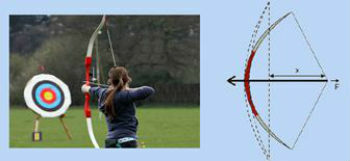The Second Law of Thermodynamics deals with the transfer of thermal energy. This means that it indicates heat exchanges that tend to equalize different temperatures (thermal equilibrium), which happens spontaneously.
Its principles are:
- Heat is transferred spontaneously from the higher-temperature body to the lower-temperature one.
- Every process has a loss because its yield is always less than 100%.
It is expressed by the following formula:

Where,
η: Yield
QTHE: heat supplied by heating
QB: untransformed heat into work
This law was established from the studies of Sadi Carnot (1796-1832). Encouraged by the Industrial Revolution, the French physicist studied the possibility of increasing the efficiency of machines.
Analyzing the Thermal machines, Carnot found that they were more efficient when there was heat transfer from the higher temperature to the lower temperature. This always happens in that order, after all the transfer of thermal energy is an irreversible process.
This means that work depends on the transfer of thermal energy, remembering that it is not possible to transform all heat into work.
It was based on the ideas of Carnot, that Clausius and Kelvin based their studies on Thermodynamics.
The Second Law of Thermodynamics is related to the concept of entropy. it completes the First Law of Thermodynamics, which is based on the principle of energy conservation.
Carnot Cycle
So that the energy is not always increasing (let us imagine in the case of a machine), it is necessary that at a certain moment it returns to its initial state and restarts the process. The process is thus cyclic.
While one part works at higher temperatures, the other part works at lower temperatures. This is possible according to the Second Law of Thermodynamics.
The cycle, in a clockwise direction, absorbs heat. This is the case with engines. The cycle, in a counterclockwise direction, loses heat. This is the case with refrigerators.
To learn more about Carnot cycle.
Read too Thermodynamics and Physics Formulas.
Solved Exercises
1. (UFAL-AL) Analyze the following propositions:
( ) Thermal machine is a system that performs cyclic transformation: after undergoing a series of transformations, it returns to its initial state.
( ) It is impossible to build a heat engine that fully transforms heat into work.
( ) Heat is a form of energy that spontaneously transfers from the higher temperature body to the lower temperature one.
( ) It is impossible to build a thermal machine that has a higher efficiency than the Carnot Machine, operating between the same temperatures.
( ) When a gas receives 400 J of heat and performs 250 J work, its internal energy increases by 150 J.
All propositions are true.
2. (CEFET-PR) The 2nd principle of Thermodynamics can be stated as follows: “It is impossible to build a machine thermal operating in cycles, the only effect of which is to remove heat from a source and fully convert it into work."
By extension, this principle leads us to conclude that:
a) it is always possible to build thermal machines whose efficiency is 100%;
b) any thermal machine only needs a hot source;
c) heat and work are not homogeneous quantities;
d) any heat engine takes heat from a hot source and rejects part of that heat to a cold source;
e) only with a cold source, always kept at 0°C, it would be possible for a certain heat engine to convert heat entirely into work.
Alternative d: any heat engine takes heat from a hot source and rejects some of that heat to a cold source;
3. (ENEM-MEC) The refrigeration and freezing of food are responsible for a significant part of the electric energy consumption in a typical residence.
To reduce the thermal losses of a refrigerator, some operational precautions can be taken:
I. Distribute the food on the shelves leaving empty spaces between them, so that cold air can circulate downwards and warm air upwards.
II. Keep the walls of the freezer with a very thick layer of ice, so that the increase in ice mass increases the heat exchange in the freezer
III. Periodically clean the radiator (“grid” at the back) so that the grease and dust deposited on it do not reduce the heat transfer to the environment.
For a traditional refrigerator, it is correct to indicate only,
a) operation I
b) operation II.
c) operations I and II.
d) operations I and III.
e) operations II and III.
Alternative d: operations I and III.
See too: Exercises on Thermodynamics



